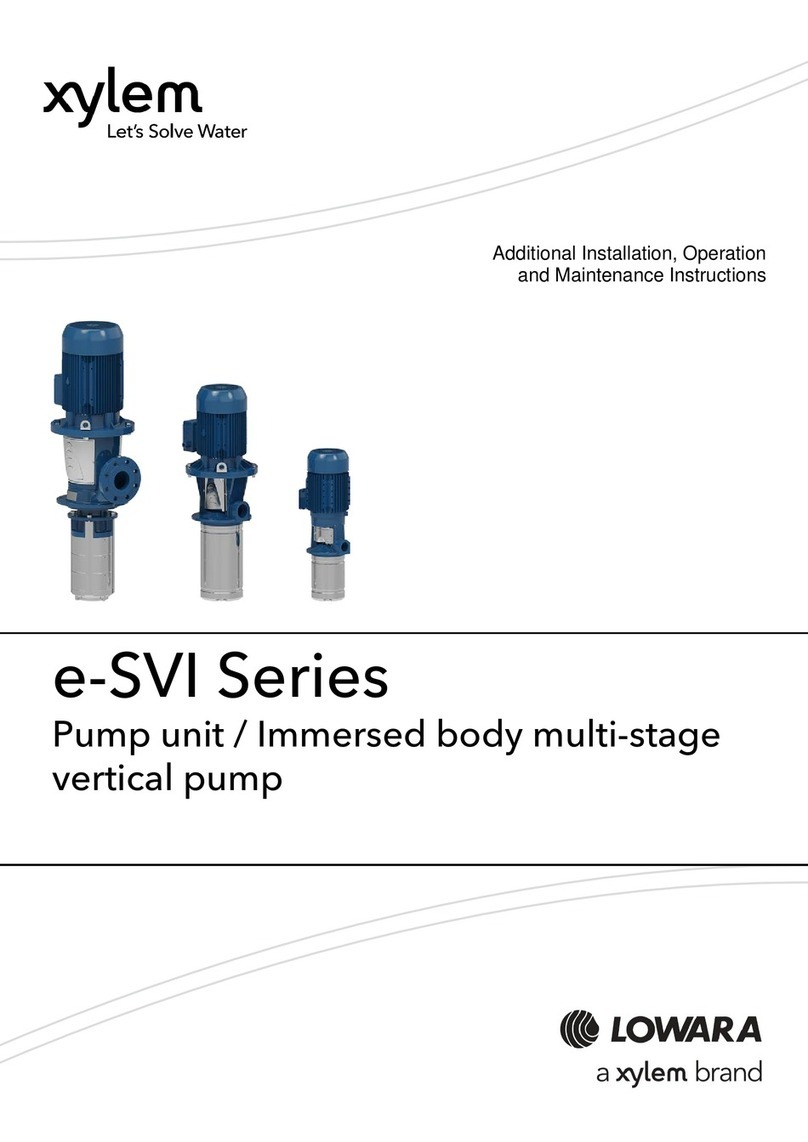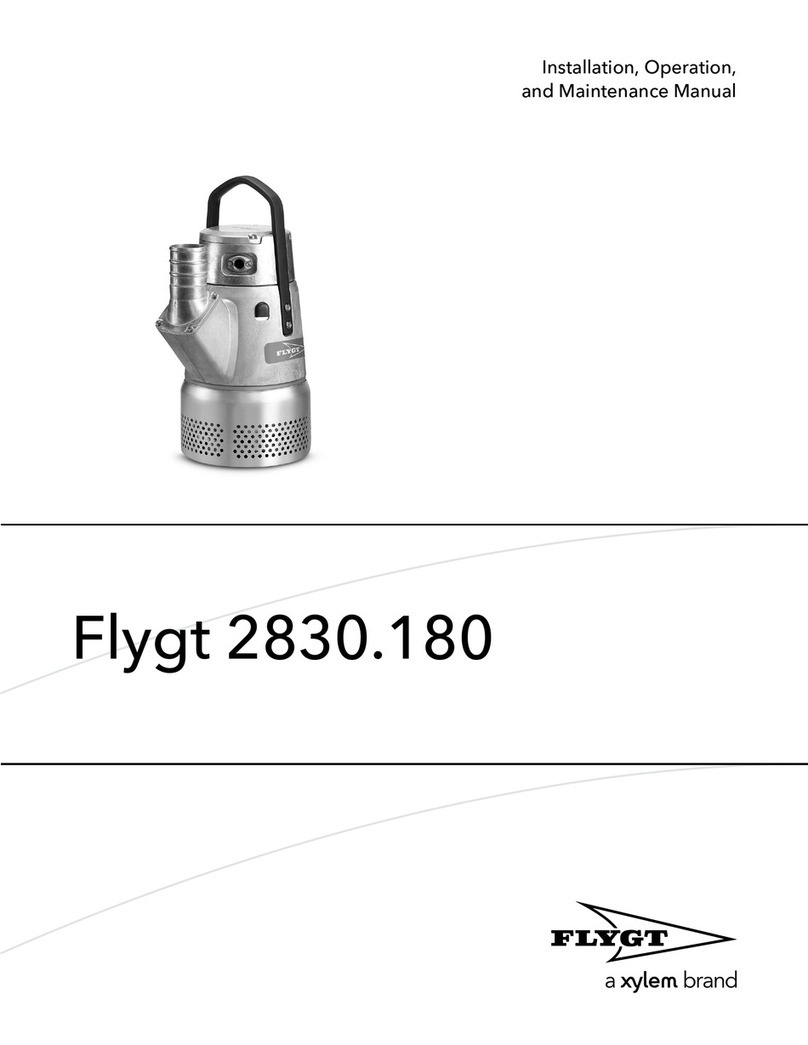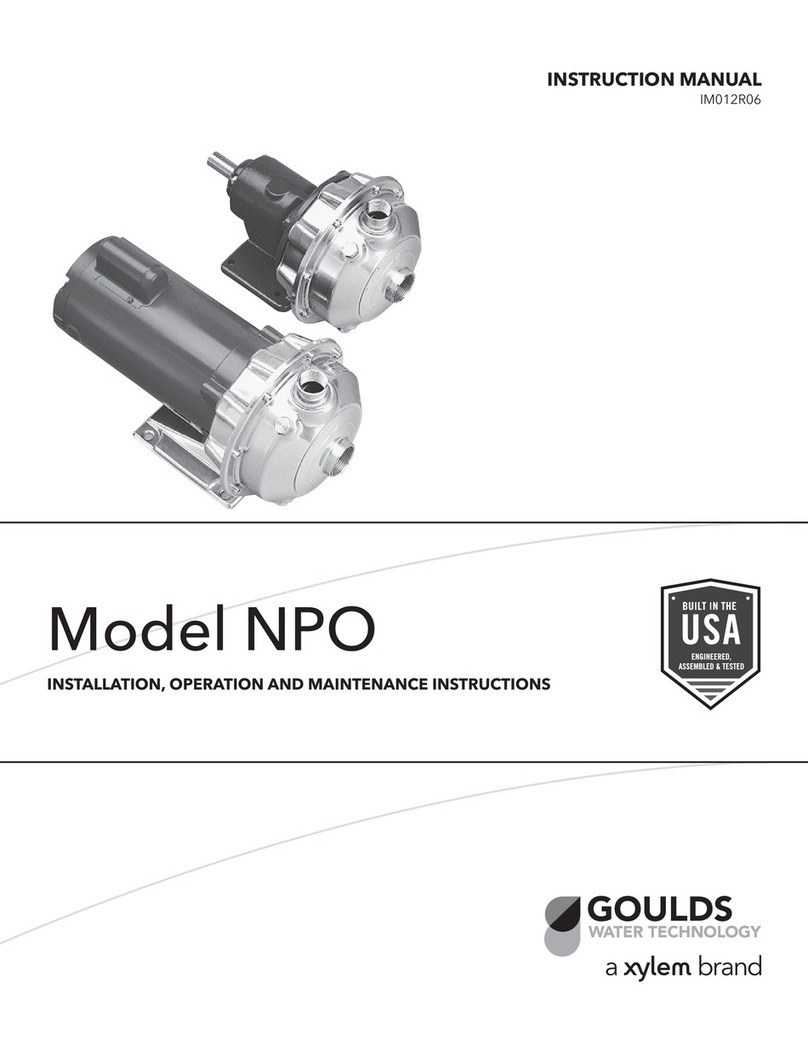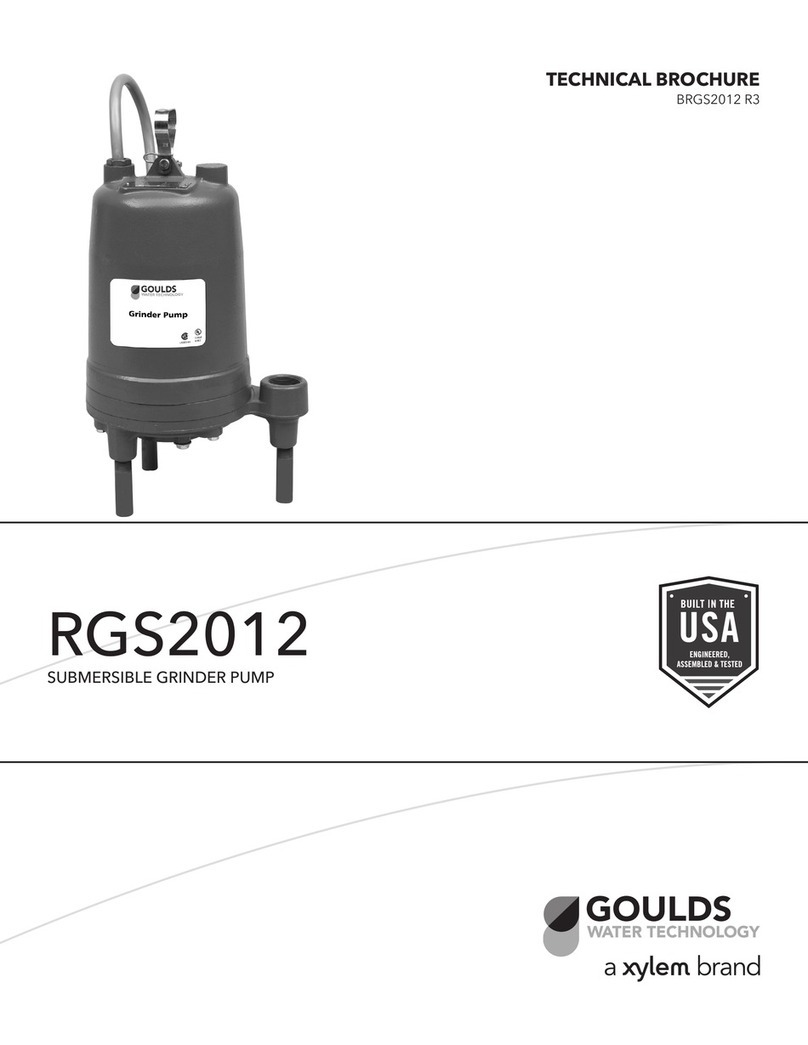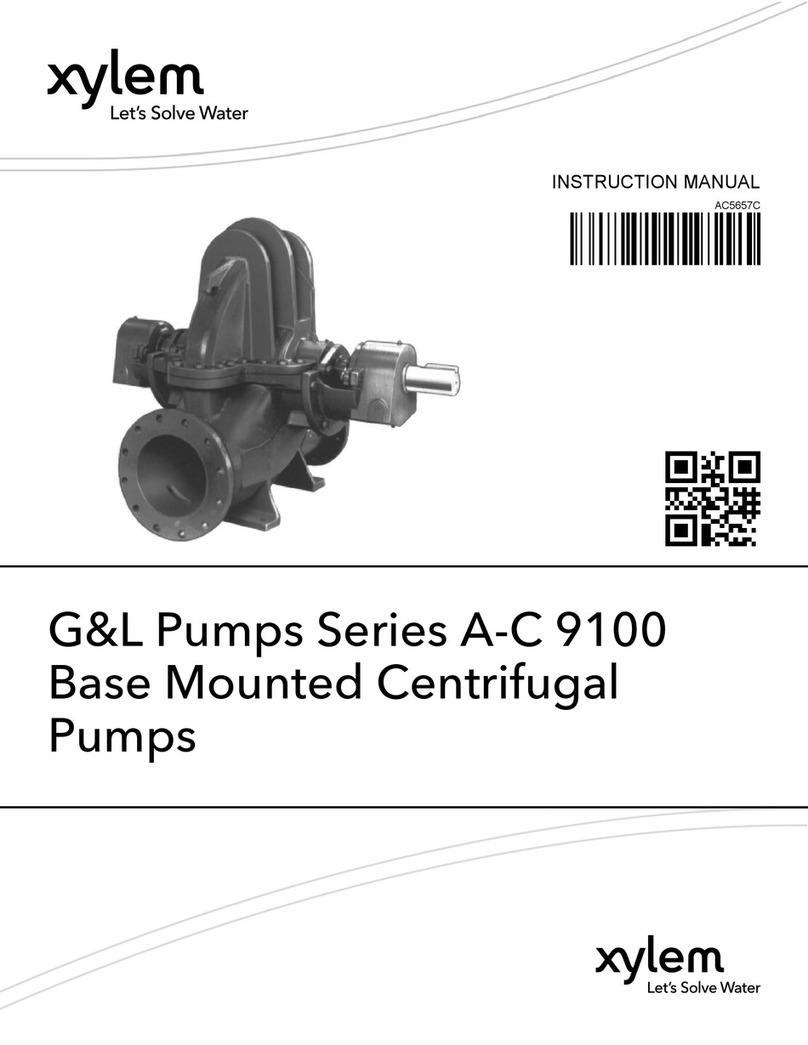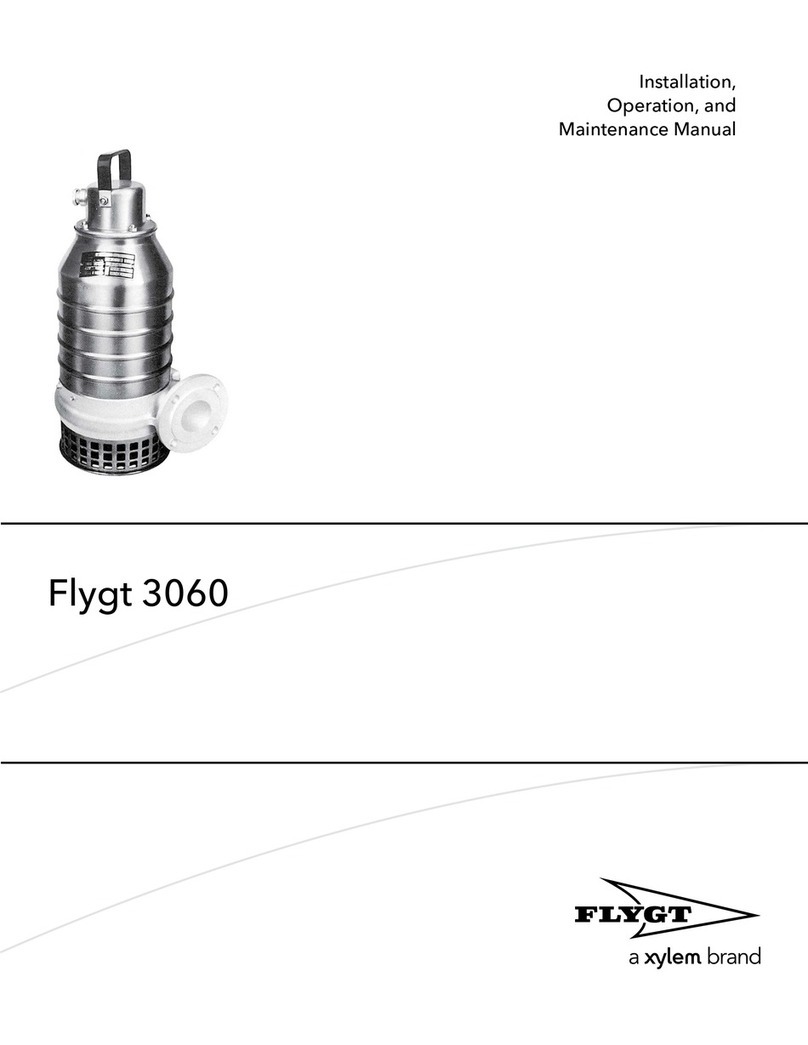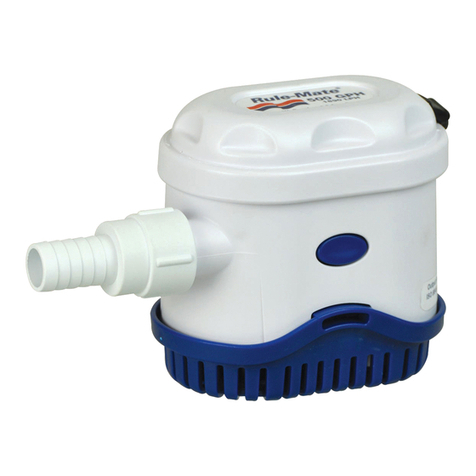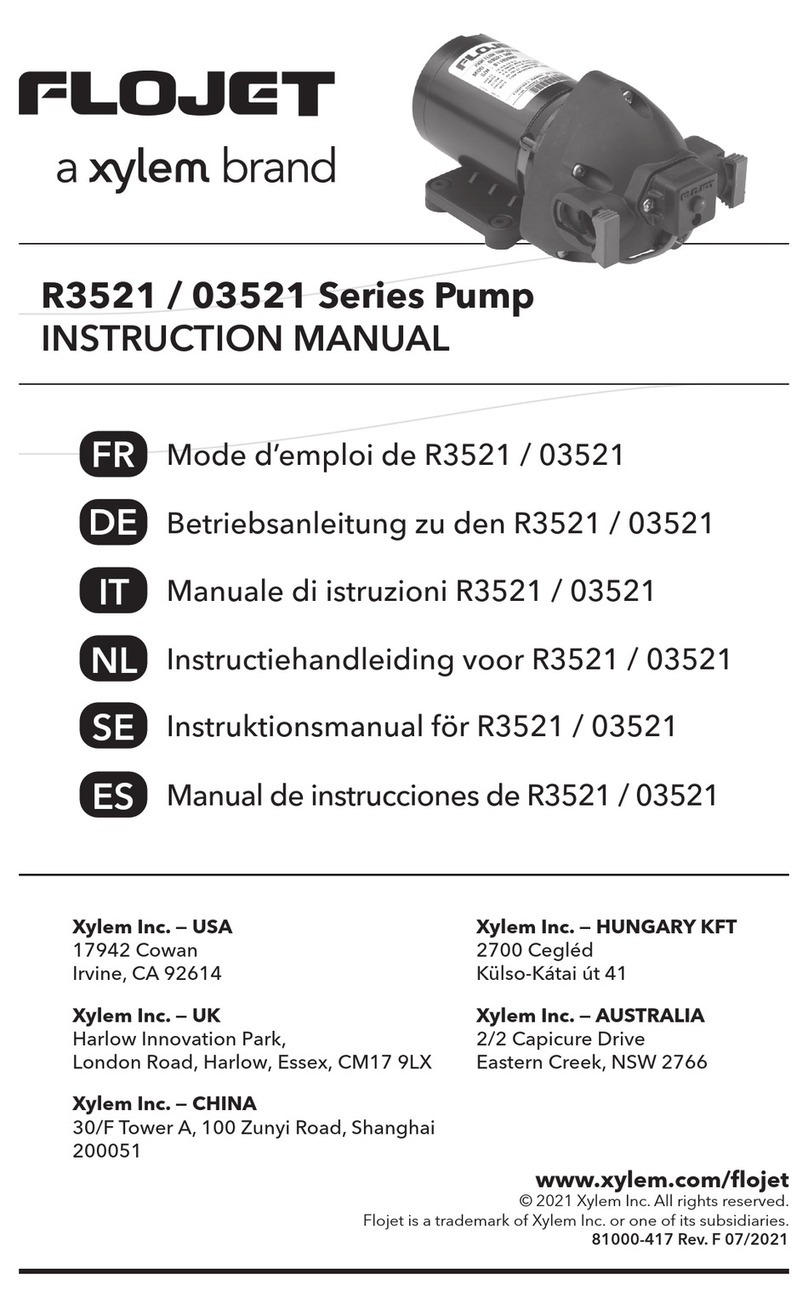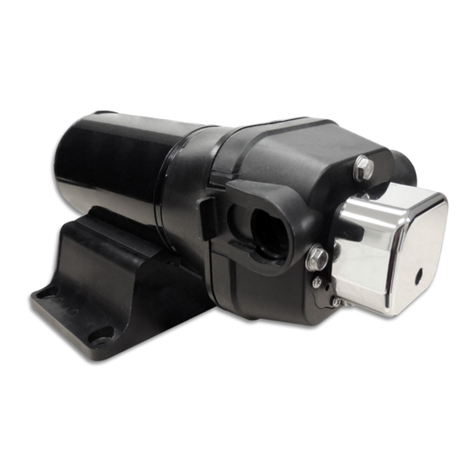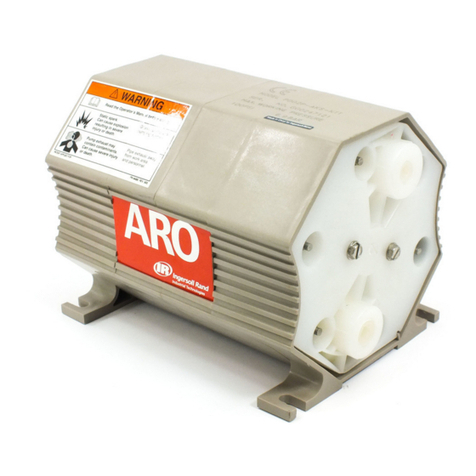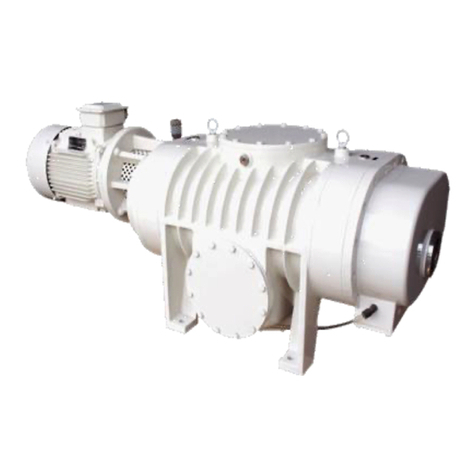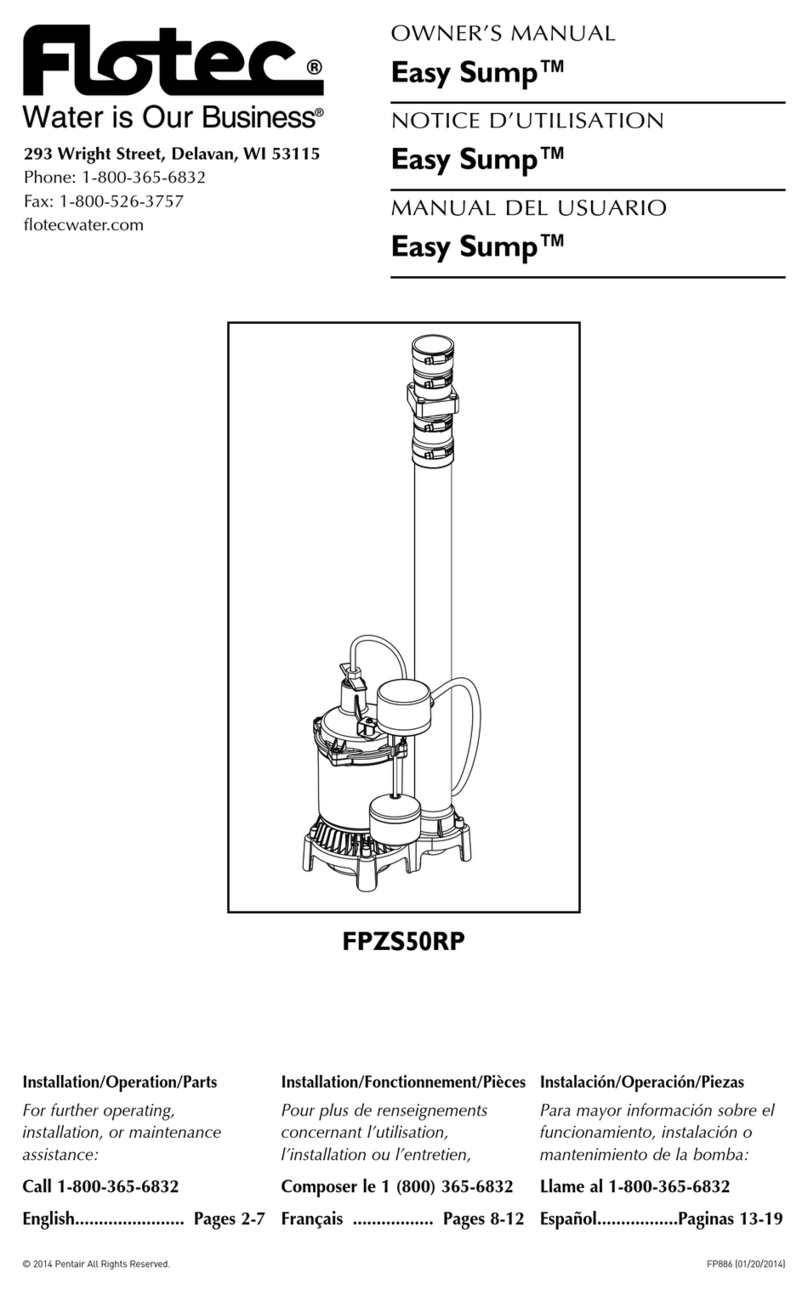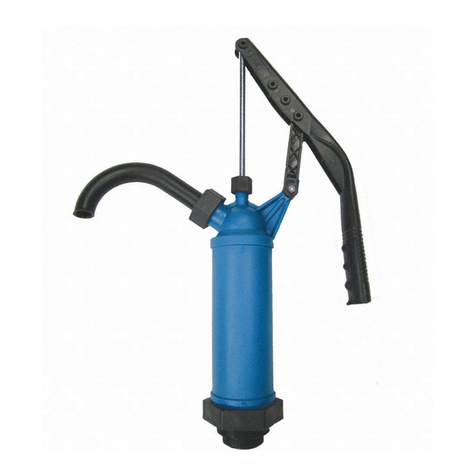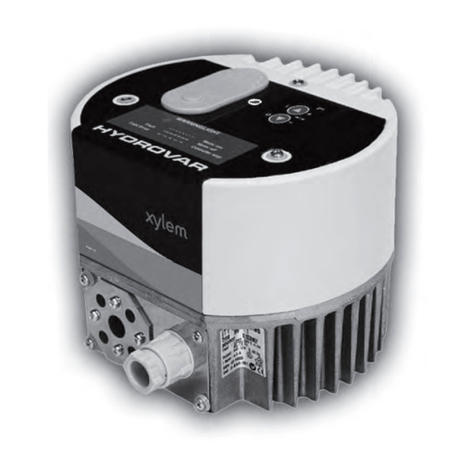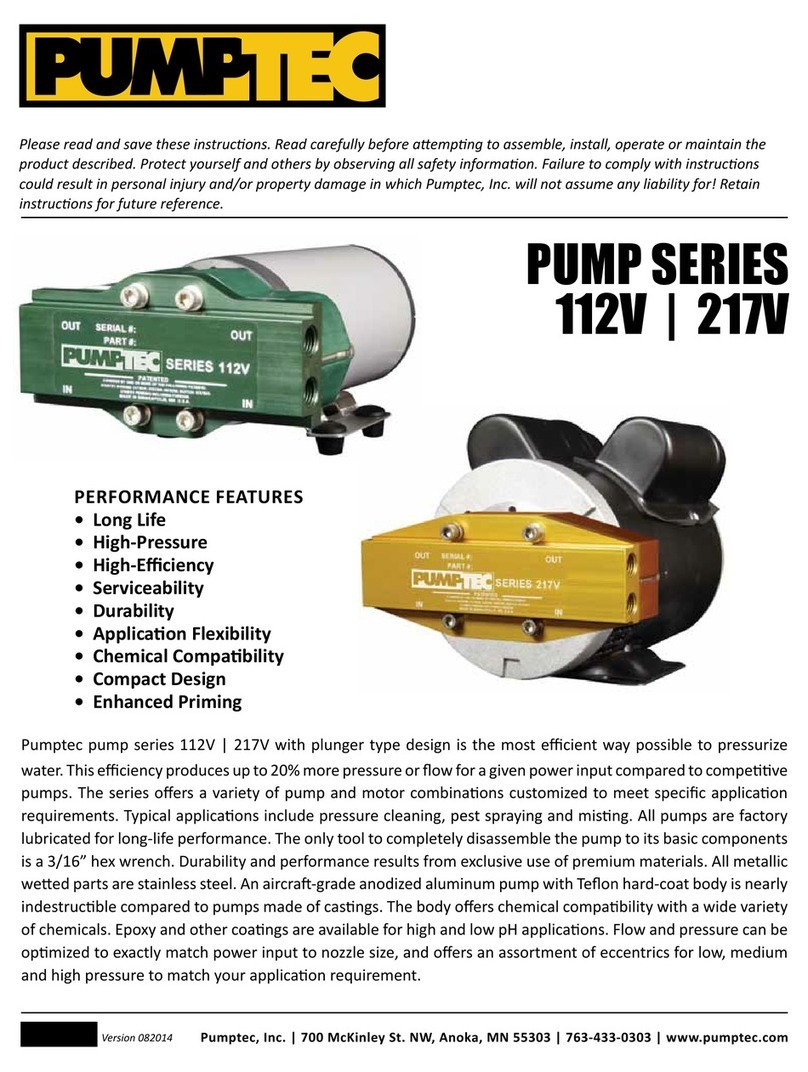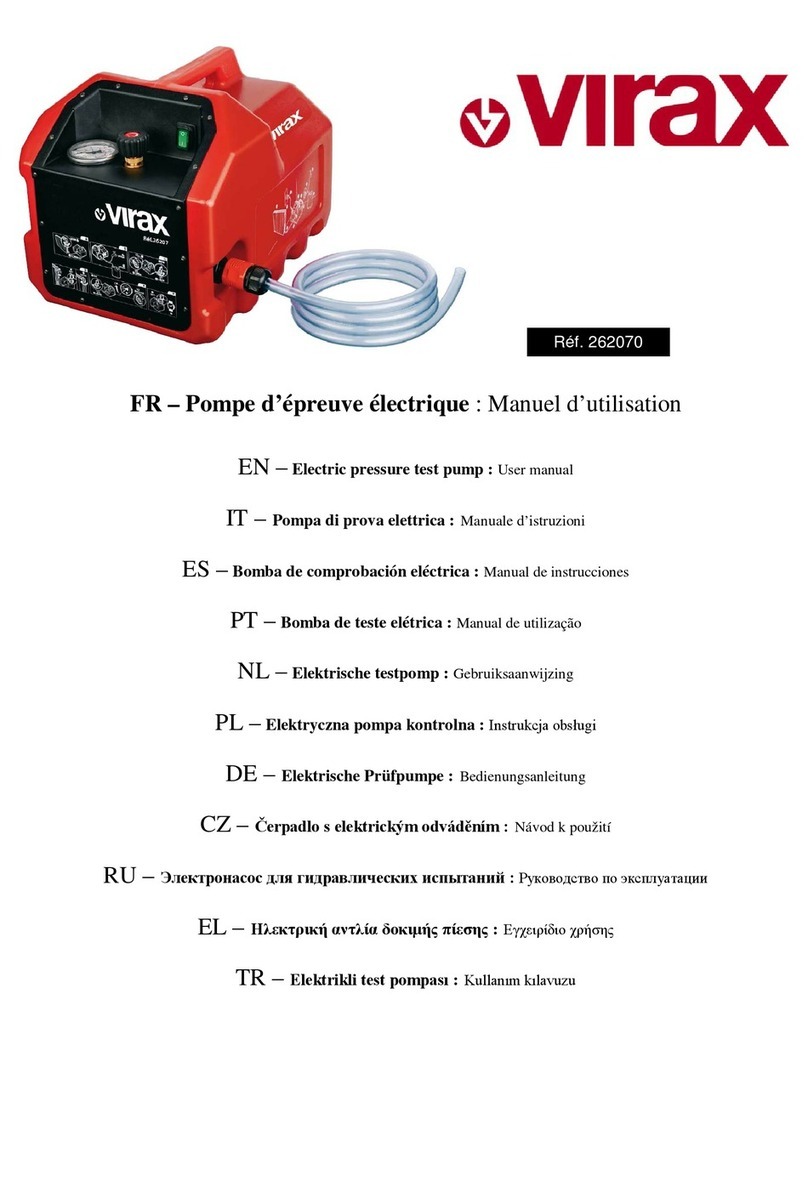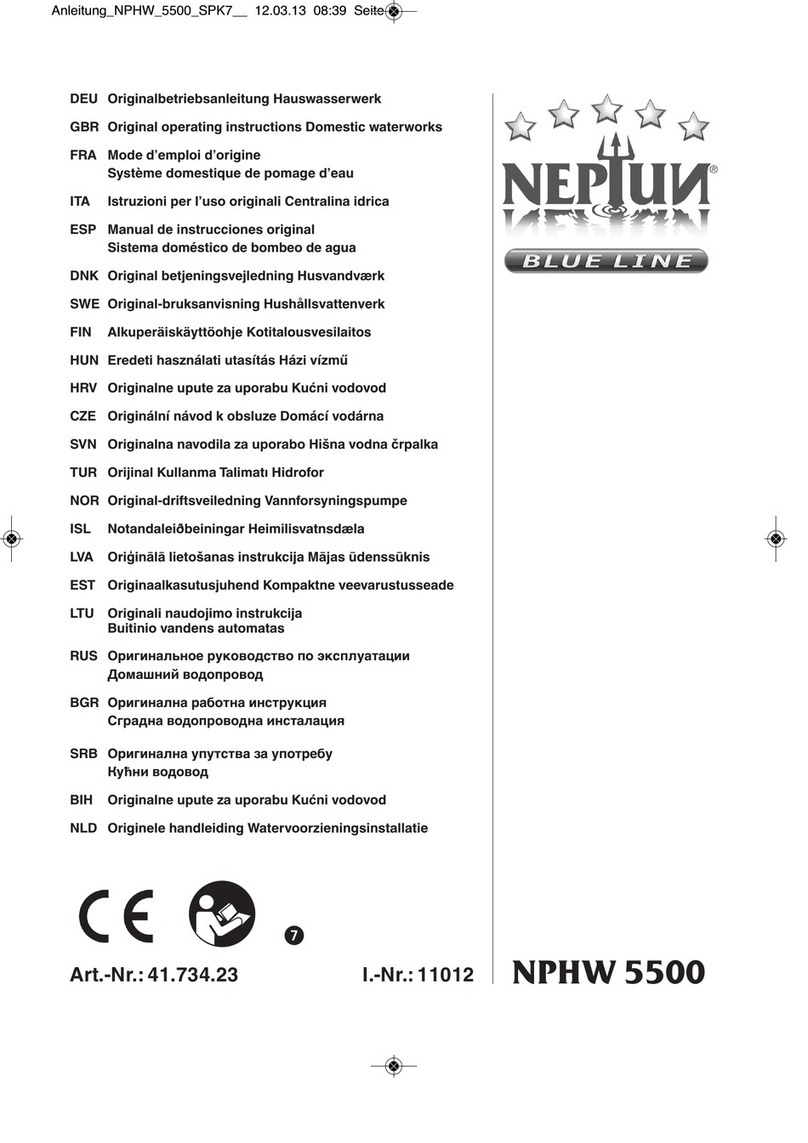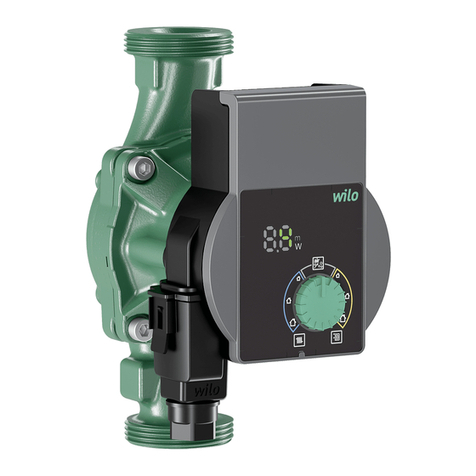
5
the connection for seal failure will be Black and Green
and the Heat sensor will be Red and White. The model
1GD/12GDS can be ordered with an optional seal failure
circuit, but most dual seal pumps come with the seal
failure circuit as a standard.
Models with a 4NS/4DWC/4XD/4XWS have a standard
conguration with seal failure and heat sensor. The leads
are in a separate jacket with 5 leads. Black (tagged P1)
and White (tagged P2) should be connected to thermal
protection terminals. The seal fail leads are Red (tagged
W1) and Orange (tagged W2) and should be connected
to the seal fail terminals. The additional lead is Green
and should be connected to Ground. Panels will come
equipped with a wiring diagram designating your con-
nections. Panels must be ordered with the options for
seal failure circuits and heat sensor circuits, since these
panels can also be used on pumps without the option for
these connections they do not come as standard on most
panels.
One additional style of seal failure and heat sensor cir-
cuits is our product sold with models GA(X) / 15GDS(X)
/ 20GDS(X); 2, 3, 4GV(X); 2, 3, 4MV(X); 2, 3, 4, 6MK(X).
These units come with a single lead for power and
controls. The conductor will come with 7 leads (previous
to January 2013). Leads For seal failure and heat sensor
will be Orange and Blue. Since these units use a differ-
ent style sensor in the pump as well as a different option
in the panel the connections require only two leads.
After January 2013 the lead colors on the pumps were
changed to two (2) white leads for the seal failure and
heat sensor.
Be careful to choose the correct options in the panel
selection for each style pump. Always follow wiring
schematic of the panel. Failure to wire the seal failure and
heat sensor leads correctly may prevent the pump from
running or cause nuisance tripping.
INSTALLATION
Connect the pump(s) to the guide rail pump adapters
or to the discharge piping. Slide rail bases should be
anchored to the wetwell oor.
Complete all wiring per the control panel wiring dia-
grams and NEC, Canadian, state, provincial and/or local
codes. This a good time to check for proper rotation of
the motors/impellers.
DO NOT PLACE HANDS IN PUMP
SUCTION WHILE CHECKING MOTOR
ROTATION. TO DO SO WILL CAUSE
SEVERE PERSONAL INJURY.
Always verify correct rotation. Correct
rotation is indicated on the pump casing.
Three phase motors are reversible. It is
allowable to bump or jog the motor for a
few seconds to check impeller rotation.
It is easier to check rotation before
installing the pump. Switch any two
power leads to reverse rotation.
Lower the pump(s) into the wetwell.
Check to insure that the oats will operate freely and not
contact the piping.
OPERATION
Once the piping connections are made and checked you
can run the pumps.
Piggyback Switch Operation – Plug the piggyback
switch into a dedicated grounded outlet and then plug
the pump into the switch. Test the pump by lling the
not used, a stand alone high liquid level alarm is avail-
able. The alarm alerts the owner of a high liquid level
in the basin so they can contact the appropriate service
personnel to investigate the situation.
SINGLE PHASE PUMPS
Single phase (1Ø) pumps may be operated using a
piggyback or in conjunction with, or a Simplex or Duplex
control panel. See Figures 1, 2 and 5.
Most 1/3and ½ HP, 115 or 230 volt pumps, and some
¾ and 1 HP pumps, are supplied with plug style pow-
er cords. They may be plugged into piggyback oat
switches for simple installations. It is allowable to remove
the plugs in order to hardwire or connect to a Simplex or
Duplex controller. Removing the plug neither voids the
warranty nor violates the agency Listings. See Figure 5.
PLUG-CONNECTED UNITS MUST
BE CONNECTED TO A PROPERLY
GROUNDED, GROUNDING TYPE
RECEPTACLE.
ON NON-PLUG UNITS, DO NOT
REMOVE CORD AND STRAIN RELIEF.
DO NOT CONNECT CONDUIT TO
PUMP.
Pumps with bare lead power cords can be hard-wired to
a oat switch, wired to a 1Ø contactor, a Simplex con-
troller or a Duplex controller. Always verify that the oat
switch is rated for the maximum run amperage, maxi-
mum starting amperage, and the HP rating on the pump.
Single-phase wastewater pumps contain on-winding
overloads, unless noted on the pump nameplate. See
Figures 1 and 2.
THREE PHASE PUMPS:
As a Minimum a 3Ø pump requires a 3 pole circuit break-
er/fused circuit, an across the line magnetic starter rated
for the pump HP, and ambient compensated Quick Trip
Class 10 overloads.
SINGLE AND THREE PHASE CONTROL PANELS:
Control panels are available as Simplex (controls 1 pump)
or Duplex (controls 2 pumps). Our standard SES Series
Panels are available with many standard features and can
be built with our most popular options. We also custom
build panels which offer many more design options.
Custom control panels are available in many different
congurations. Custom panel quote requests may be
forwarded to Customer Service through any authorized
distributor.
Our duplex panels feature a solid-state printed circuit
board design with standard high level alarm circuits. Oth-
er standard features are: an auxiliary dry alarm contact
for signaling a remote alarm and oat switch position
indicator lights. Our 3Ø panels have built-in, adjustable,
Class 10 overloads. The adjustable overloads on all our
3Ø panels mean less labor for the installer and no need
to order specic overloads. Most panels are in stock for
immediate delivery without options.
Heat Sensor and Seal Failure Circuit - Some Pumps are
equipped with a seal failure circuit and a Heat sensor. On
standard product the seal failure circuit, if supplied with-
out Heat sensor will have an extra lead from the motor
with two conductors. These leads will be Black and White
and should be connected to the seal failure terminals in
a panel supplied with this option. If a seal failure circuit
and Heat sensor are supplied with the pump there will
be a separate lead with four conductors. For these leads
DANGER
Hazardous Machinery
!
WARNING
Hazardous voltage
can shock, burn or
cause death.

